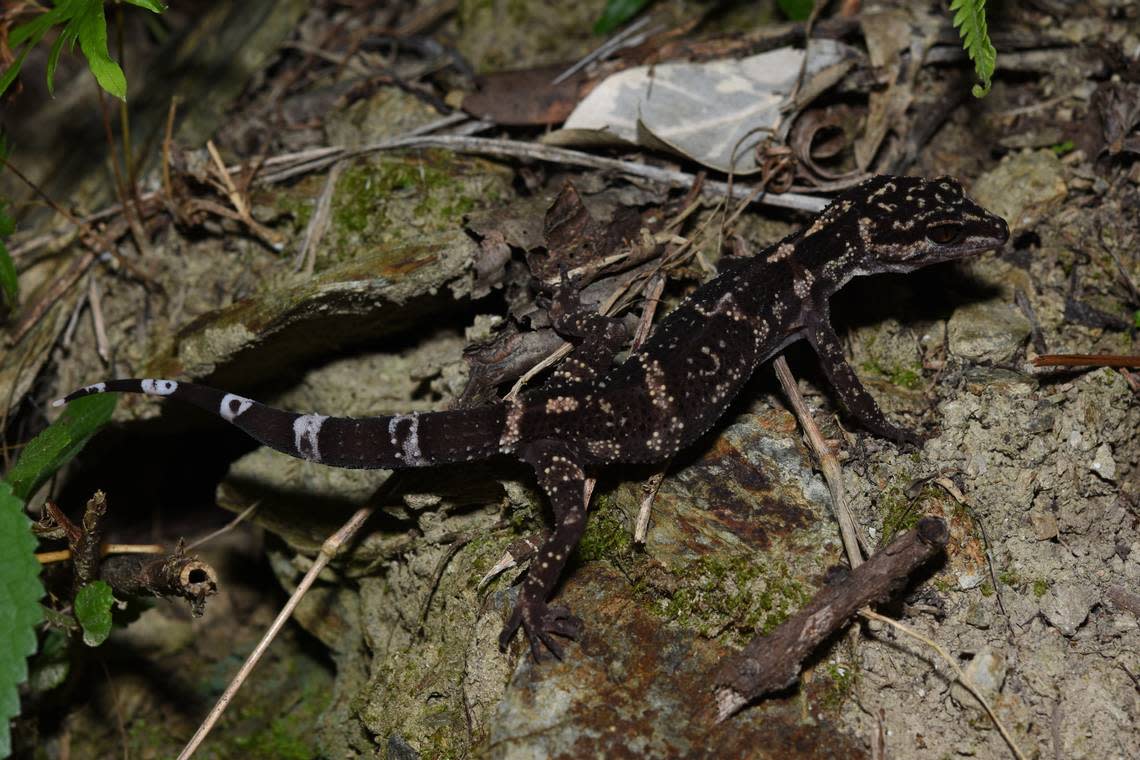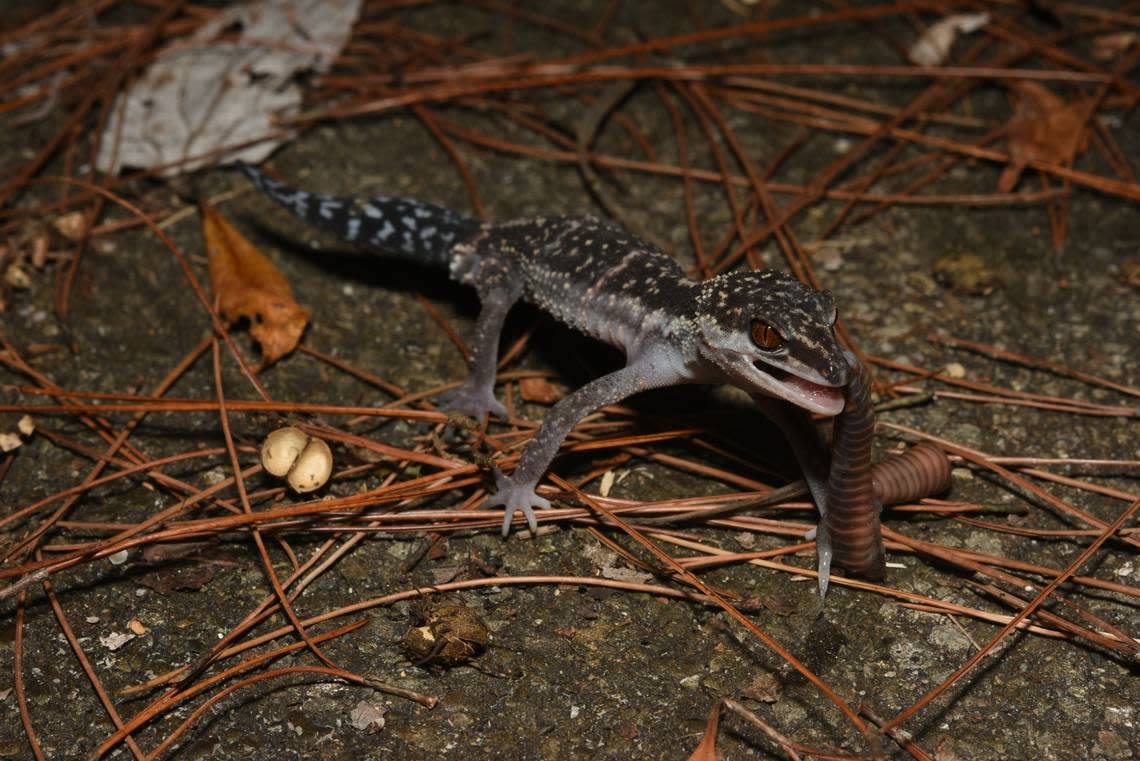‘Long’-tailed creature — with ‘large’ red eyes — found on island. It’s a new species
Obscured by the darkness, a “long”-tailed creature prowled an island in Japan looking for its next meal. Its “large” red eyes scanned the plants for prey.
But it wasn’t the only one searching that night.
Scientists spotted the spiky animal — and discovered a new species.
Researchers visited dozens of sites on Okinawa island as part of a wildlife survey, according to a study published March 1 in the journal Current Herpetology. They were looking for geckos because they suspected some of these lizards were being misidentified.
Comparing geckos from different parts of the island, researchers began to notice a pattern, the study said. The northern geckos had different scale patterns and spikes than the southern geckos.
Researchers soon realized that they’d discovered a new species: Goniurosaurus nebulozonatus, or the obscurely banded eyelid gecko.
Obscurely banded eyelid geckos are considered “moderate-sized,” reaching over 6 inches in length, the study said. They have “short” snouts, triangular heads and “large” red eyes with an “orange” fringe. They have “slender” bodies covered in spikes, “long” tails and “thick” claws.

Discover more new species
Thousands of new species are found each year. Here are three of our most eye-catching stories from the past week.
→ Large 'cryptic' creature found lurking under bridge in Ecuador. It's a new species
→ 'Long'-tailed creature — with unique snout — found on Angola farm. It's a new species
→Pregnant creature — with 'light orange' bumps on its skin — is a new species. See it
A photo shows the dark brown coloring of an obscurely banded eyelid gecko and its white striped tail. On its head and back, the gecko has lighter brown blotches that form “diffused” bands.
Researchers said they named the new species after the Latin words “nebula,” meaning “obscurity,” and “zona,” meaning “band,” because of its pattern.
Obscurely banded eyelid geckos are “nocturnal and ground-dwelling,” the study said. They were found in a variety of habitats including mountains, rocky areas and forests as well as “parks, graves, and roadsides.” Pregnant geckos were found between June and September.
The new species “mainly consumes large invertebrates, such as earthworms, spiders, centipedes, crickets, cockroaches, and insect larvae,” researchers said. A photo shows one of these geckos eating.

Obscurely banded eyelid geckos live in the northern part of Okinawa island and the small neighboring island of Kouri, the study said. Okinawa is one of Japan’s largest and southernmost islands, about 900 miles southwest of Tokyo.
The new species was identified by its size, eye color, scale pattern, spikes and DNA, the study said. DNA analysis found the new species had “remarkable” genetic divergence from other eyelid geckos.
The research team included Takaki Kurita and Mamoru Toda.
Large ‘dragon’-like creature — able to change color — discovered as new species
‘Dwarf’-like creature found lurking on mountain in Venezuela. It’s a new species
‘Ghost’-like sea creature — with ‘massive’ head and peeling skin — is a new species
